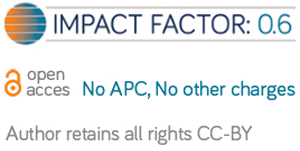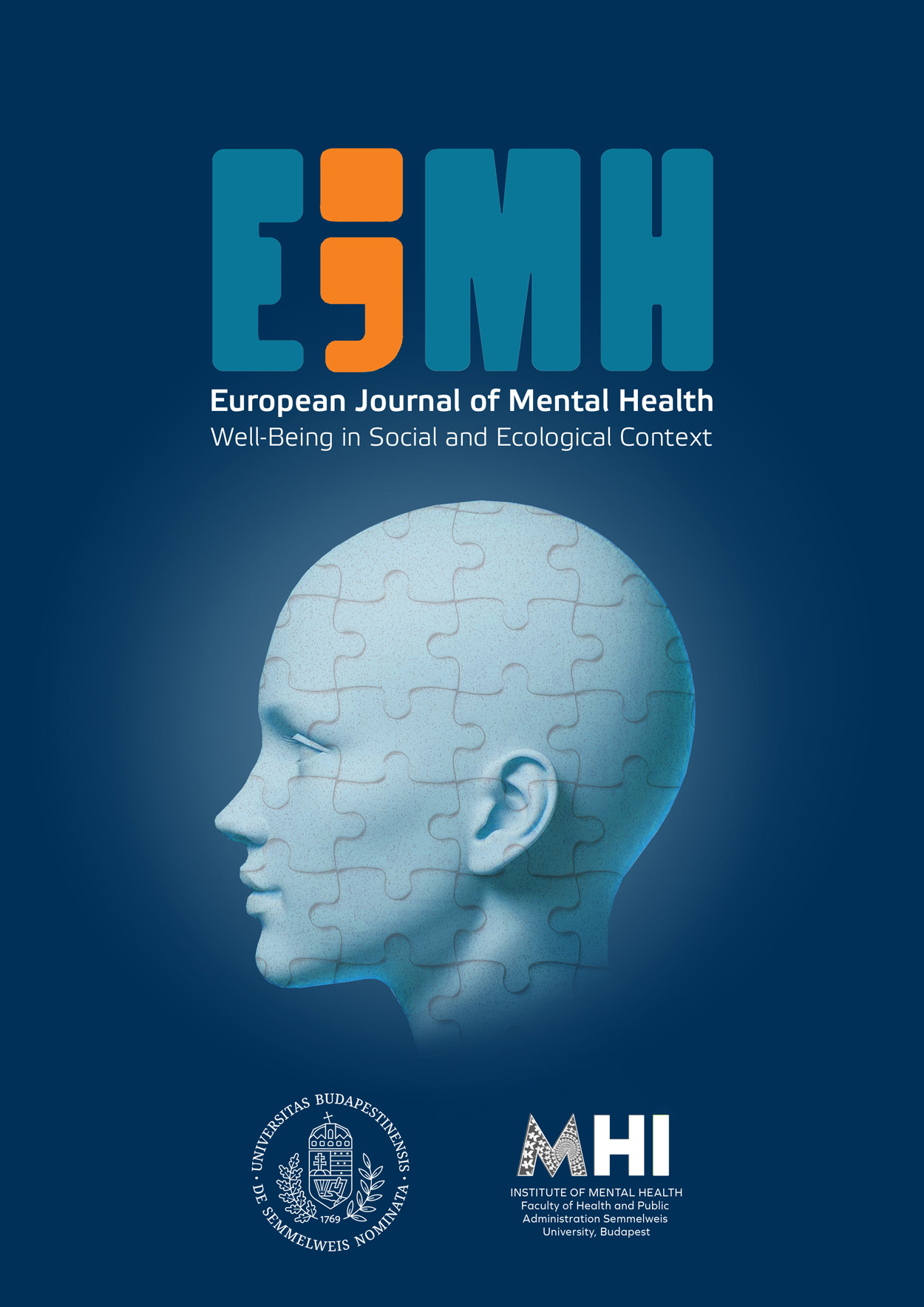Media-Induced Secondary Traumatic Stress: The Case of the Kahramanmaras Earthquake in Turkey
DOI:
https://doi.org/10.5708/EJMH.19.2024.0028Keywords:
secondary traumatic stress, media, earthquake, interdisciplinarity, media psychologyAbstract
Introduction: Trauma manifests in a variety of ways and disrupts the lives of individuals. This is particularly the case in an age when communication technologies are permeating everyday practices, and mass media is an essential means of communication. A review of the international literature on disasters reveals that the measurement tools used in the research on the association between Secondary Traumatic Stress (STS) and the media are limited.
Aims: The main aim of this study is to measure the STS levels in the audience of the media content regarding the Kahramanmaras-centered earthquake and to examine the factors associated with it.
Methods: First, a measurement tool on the subject was developed, and then its psychometric properties were investigated. Exploratory factor analysis, confirmatory factor analysis, validity, and reliability analyses were conducted throughout the studies (N = 30 for Study I; N = 265 for Study II; N = 283 for Study III).
Results: A 17-item, four-factor (intrusion, anxiety, media distrust, and avoidance), valid and reliable scale was created. Moreover, depression was found to have a partial mediating effect on the significant relationship between media exposure related STS and psychological well-being (β = –.22, SE = .027, 95% CI [–.25, –.19]).
Conclusions: The results revealed the multi-dimensional impact of STS on people indirectly exposed to trauma as well as the uniqueness of the scale.
References
Ariapooran, S., Ahadi, B., & Khezeli, M. (2022). Depression, anxiety, and suicidal ideation in nurses with and without symptoms of secondary traumatic stress during the COVID-19 outbreak. Archives of Psychiatric Nursing, 37, 76–81.
https://doi.org/10.1016/j.apnu.2021.05.005
Abanoz, E. (2018). Bir teror saldırısı sırasında sosyal medya reaksiyonun duygu analizi [Sentiment analysis of social media reaction during a terrorist attack]. In Z. Kızmaz (Ed.), Teror ve Uyusturucu Madde Siddeti. (pp. 214–232). Hegem.
American Psychological Association (n.d.). Trauma.
https://www.apa.org/topics/trauma
American Psychiatric Association (2013). Diagnostic and statistical manual of mental disorders (5th ed.).
https://doi.org/10.1176/appi.books.9780890425596
Ashforth, B. & Kreiner, G. (2002). Normalizing emotion in organizations: Making the extraordinary seem ordinary. Human Resource Management Review, 12(2), 215–235.
https://doi.org/10.1016/S1053-4822(02)00047-5
Atalay, G. E. (2017). Siddeti haber yapmak: Gazeteciler ve travma [Reporting on violence: Journalists and trauma]. Marmara İletisim Dergisi, 28, 21–32.
https://doi.org/10.17829/midr.20172833775
Aufderheide, P. (1993). Media literacy: A report of the national leadership conference on media literacy. Aspen Institute.
Balcı Celik, S. & Altınısık, M. S. (2021). Adaptation of Secondary Traumatic Stress Scale to Turkish for social media users: Reliability and validity study. Turkish Psychological Counseling and Guidance Journal, 11(60), 1–12.
Baumgartner, H., & Hombur, C. (1996). Applications of structural equation modeling in marketing and consumer research: A review. International Journal of Research in Marketing, 13(2), 139–161.
https://doi.org/10.1016/0167-8116(95)00038-0
Beck, A. T., & Beamesderfer, A. (1974). Assessment of depression: The depression inventory. Modern Problems of Pharmacopsychiatry, 7(0), 151–169.
https://doi.org/10.1159/000395074
Beck, A. T. & Steer, R.A. (1984). Internal consistencies of the original and revised Beck Depression Inventory, Journal of Clinical Psychology, 40(6), 1365–1367.
https://doi.org/10.1002/1097-4679(198411)40:6<1365::AID-JCLP2270400615>3.0.CO;2-D
Beck, A. T., Ward, C. H., Mendelson, M., Mock, J., & Erbaugh, J. (1961). An inventory for measuring depression. Archives of General Psychiatry, 4(6), 561–571.
https://doi.org/10.1001/archpsyc.1961.01710120031004
Bride, B. E., Smith Hatcher, S., & Humble, M. N. (2009). Trauma training, trauma practices, and secondary traumatic stress among substance abuse counselors. Traumatology, 15(2), 96–105.
https://doi.org/10.1177/1534765609336362
Bride, B. E., Jones, J. L., & MacMaster, S. A. (2007). Correlates of secondary traumatic stress in child protective services workers. Journal of Evidence-Based Social Work, 4(3–4), 69–80.
https://doi.org/10.1300/J394v04n03_05
Bride, B. E., Robinson, M. M, Yegidis, B., & Figley, C. R. (2004). Development and validation of the Secondary Traumatic Stress Scale. Research on Social Work Practice, 14(1), 27–35
https://doi.org/10.1177/1049731503254106
Cattell, R. B. (1966). The scree test for the number of factors. Multivariate Behavioral Research, 1(2), 245–276.
https://doi.org/10.1207/s15327906mbr0102_10
Comstock, C. & Platania, J. (2017). The role of media-induced secondary traumatic stress on perceptions of distress. American International Journal of Social Science, 6(1), 1–10.
Curry, J. F. & Reinecke, M. A. (2003). Modular therapy for adolescents with major depression. In Mark. A. Reinecke, Frank. M. Dattilo & Arthur Freeman (Eds.), Cognitive therapy with children and adolescents: A casebook for clinical practice (pp. 95–127). The Guilford Press.
Diener, E., Wirtz, D., Biswas-Diener, R., Tov, W., Kim-Prieto, C., Choi, D. & Oishi, S. (2009). New measures of wellbeing. In Alex C. Michalos (Ed.), Aseessing Well-Being: The collected works of Ed Diener (pp. 247–266). Springer.
https://doi.org/10.1007/978-90-481-2354-4
Dirkzwager, A. J., Bramsen, I., Adèr, H., & van der Ploeg, H. M. (2005). Secondary traumatization in partners and parents of Dutch peacekeeping soldiers. Journal of Family Psychology, 19(2), 217–226.
https://doi.org/10.1037/0893-3200.19.2.217
Ewer, P. L., Teesson, M., Sannibale, C., Roche, A., & Mills, K. L. (2015). The prevalence and correlates of secondary traumatic stress among alcohol and other drug workers in Australia. Drug and Alcohol Review, 34(3), 252–258.
https://doi.org/10.1111/dar.12204
Faul, F., Erdfelder, E., Lang, A.-G. & Buchner, A. (2007). G*Power 3: A flexible statistical power analysis program for the social, behavioral, and biomedical sciences. Behavior Research Methods, 39, 175–191.
https://doi.org/10.3758/BF03193146
Field, A. (2018). Discovering statistics using IBM SPSS Statistics (5th ed.). Sage Publications.
Figley, C. R. (Ed.). (1995). Compassion fatigue: Coping with secondary traumatic stress disorder in those who treat the traumatized: Compassion fatigue as secondary traumatic stress disorder: An overview. Routledge.
https://doi.org/10.4324/9780203777381
Figley, C. R. (Ed.). (1998). Burnout in families: The systemic costs of caring. CRC Press.
https://doi.org/10.4324/9780367804527
George, D. & Mallery, P. (2019). IBM SPSS Statistics step by step. Taylor & Francis.
https://doi.org/10.4324/9780429056765
Hatcher, S. S., Bride, B. E., Oh, H., King, D. M., & Catrett, J. J. F. (2011). An assessment of secondary traumatic stress in juvenile justice education workers. Journal of Correctional Health Care, 17(3), 208–217.
https://doi.org/10.1177/1078345811401509
Hayes, A. F., Montoya, A. K., & Rockwood, N. J. (2017). The analysis of mechanisms and their contingencies: PROCESS versus structural equation modeling. Australasian Marketing Journal, 25(1), 76–81.
https://doi.org/10.1016/j.ausmj.2017.02.001
Herman, J. L. (1997). Trauma and recovery. Hachette Book Group.
Hisli, N. (1989a). Beck Depresyon Envanterinin universite ogrencileri icin gecerligi guvenirligi [Validity and reliability of the Beck Depression Inventory for university students]. Psikoloji Dergisi, 7(23), 3–13.
Hisli, N. (1989b). Beck Depresyon Envanterinin gecerligi uzerine bir calısma [A study on the validity of the Beck Depression Inventory]. Psikoloji Dergisi, 6(22), 118–126.
Hu, L., & Bentler, P. M. (1999). Cutoff criteria for fit indexes in covariance structure analysis: Conventional criteria versus new alternatives. Structural Equation Modeling: A Multidisciplinary Journal, 6(1), 1–55.
https://doi.org/10.1080/10705519909540118
Kahil, A., & Palabıyıkoğlu, N. R. (2018). İkincil travmatik stress [Secondary traumatic stress]. Psikiyatride Güncel Yaklaşımlar, 10(1), 59–70.
https://doi.org/10.18863/pgy.336495
Keats, P. A., & Buchanan, M. J. (2013). Covering trauma in Canadian journalism: Exploring the challenges. Traumatology, 19(3), 210–222.
https://doi.org/10.1177/1534765612466152
Keyes, C. L. M., Shmotkin, D., & Ryff, C. D. (2002). Optimizing well-being: The empirical encounter of two traditions. Journal of Personality and Social Psychology, 82(6), 1007–1022.
https://doi.org/10.1037//0022-3514.82.6.1007
Kline, R. B. (2019). Yapısal eşitlik modellemesinin ilkeleri ve uygulaması [Principles and practice of structural equation modeling] (S. Şen, Trans.; 4th ed.). Nobel. (Original work published 2016)
Kutukoglu, E. (2021). Afet gazeteciligine gundem belirleme kuramı ve izmir depremi haberlerinden bakıs [A look at disaster journalism from agenda setting theory and Izmir earthquake news]. MEDIAJ, 4(2), 211–233.
https://doi.org/10.33464/mediaj.994871
Mancini, M. N. (2019). Development and validation of the Secondary Traumatic Stress Scale in a sample of social media users [Unpublished doctoral dissertation]. Cleveland State University.
Morrison, J. (2014). DSM-5 (R) made easy: The clinician's guide to diagnosis. Guilford Publications.
Motta, R. W., Hafeez, S., Sciancalepore, R., & Diaz, A. B. (2001). Discriminant validation of the Modified Secondary Trauma Questionnaire. Journal of Psychotherapy in Independent Practice, 2(4), 17–25.
Perstling, M., & Rothmann, S. (2012). Secondary traumatic stress, psychological wellbeing and life satisfaction of social workers in Namibia. Journal of Psychology in Africa, 22(1), 1–9.
https://doi.org/10.1080/14330237.2012.10874515
Salman, A., Ibrahim, F., Abdullah, M.Y. H., Mustaffa, N. & Mahbob, M. H. (2011). The impact of new media on traditional mainstream mass media. The Innovation Journal: The Public Sector Innovation Journal, 16(3), 1–11.
Secker, R. & Braithwaite, E. (2021). Social media-induced secondary traumatic stress: Can viewing news relating to knife crime via social media induce PTSD symptoms, Psychreg Journal of Psychology, 5(2), 38–49.
https://doi.org/10.5281/zenodo.5746737
Soper, D. S. (n.d.). A-priori sample size calculator for student t-Tests. Retrieved May 28, 2023, from
https://www.danielsoper.com/statcalc/default.aspx
Telef, B. B. (2013). The adaptation of psychological well-being into Turkish: A validity and reliability study. Hacettepe University Journal of Education, 28(3), 374–384.
van der Kolk, B. (2015). The body keeps the score: Mind, brain and body in the transformation of trauma. Viking.
Vogels, E. A., Gelle-Watnick, R. & Massarat, N. (2022). Teens, social media and technology. Pew Research Center.
https://www.pewresearch.org/internet/2022/08/10/teens-social-media-and-technology- 2022/
World Medical Association. (2022). WMA Declaration of Helsinki – ethical principles for medical research involving human subjects. WMA.
WMA Declaration of Helsinki – Ethical Principles for Medical Research Involving Human Subjects – WMA – The World Medical Association
Yanbolluoğlu, Ö. (2019). İkincil travmatik stresin meslek elemanları üzerindeki etkileri: Bir derleme çalışması [The effects of secondary traumatic stress on occupational personnel: A review study]. Uludağ Üniversitesi Fen-Edebiyat Fakültesi Sosyal Bilimler Dergisi, 20(36), 141–164.
https://doi.org/10.21550/sosbilder.428251






